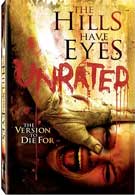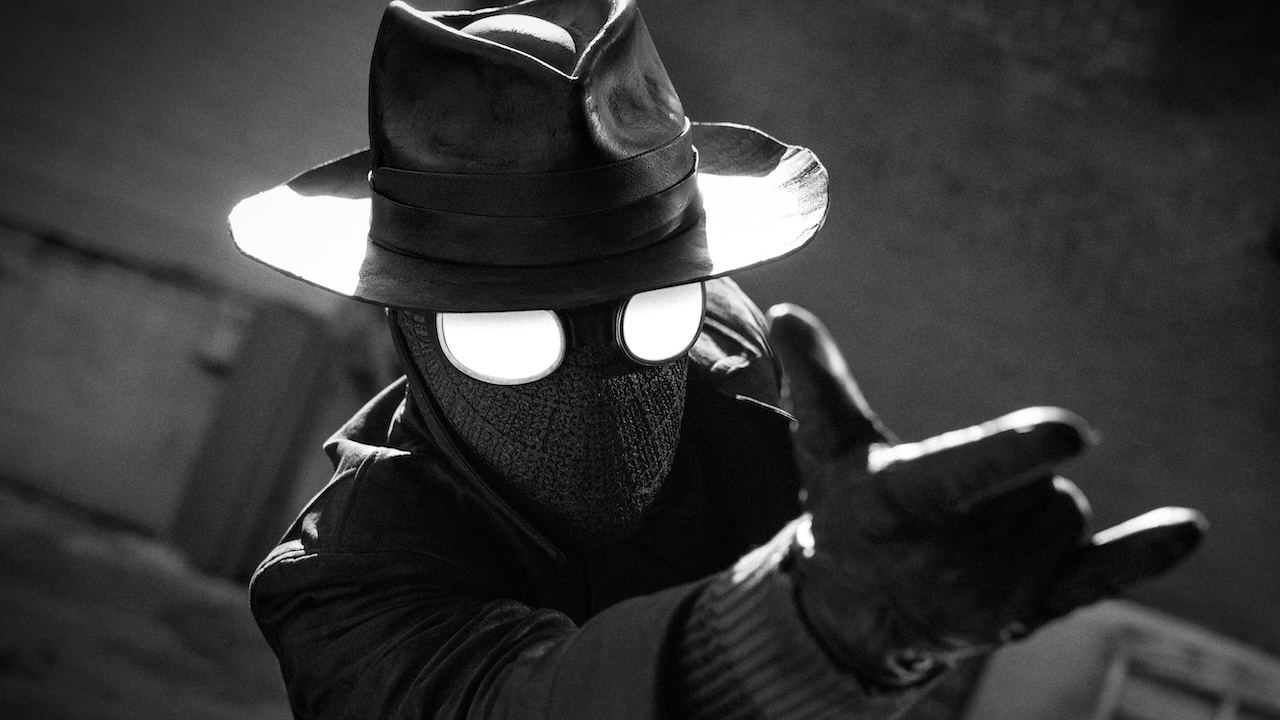Remakes of 1970s horror movies are a dime a dozen these days; with the luxury of not having to come up with a unique idea for a movie, studios continue to search through their catalogue to find the movies that have grown in popularity and horror genre lore and remake them. The Hills Have Eyes is no exception. However, instead of capitalizing on the atmosphere of the original, director Alexandre Aja relies more on brutality and exploitation than suspense and story construction. In 1977, Wes Craven, a little known director who had but one film to his name (Last House on the Left), released a low-budget horror that shocked audiences. Second only to 1974’s Texas Chainsaw Massacre, The Hills Have Eyes (1977) was dingy and desolate in its depiction of a family road trip gone awry, as their car breaks down in the middle of the desert, and they are terrorized by a group of ration-mutated locals. Over time, the film took its place as the roots of Wes “Nightmare on Elm Street” Craven and in horror genre lore. (Trivia: The 1977 Hills Have Eyes has a torn Jaws poster in one scene as a mocking homage to say that it wasn’t horror, The Hills Have Eyes was. In Evil Dead (1981), Sam Raimi included a torn The Hills Have Eyes poster to return the sentiment)
With this latest rendition, The Hills Have Eyes is a brutally sick movie that substitutes suspenseful tension with loud noise jump scares and themes of government wrong-doing with graphic violence. Be forewarned, this is brutality for brutality sake. The film crosses the line between the horrific and inexcusable exploitation half way into its running time, and it never fully recovers - that point being when one of the deranged mutants, who has just raped one of the women, proceeds to rape another woman while holding a gun to her baby’s head. In the background, another mutant has his way with the previously violated woman. This isn’t horror, it’s inhuman and disgusting.
Although the movie hints of a theme about the testing of nuclear weapons, it is more or less just an excuse for the deranged killers to exist. The movie’s only point of interest is the visual style. Aja’s camera movements and framing come close to transcending contemporary conventions, giving the film the potential to become a classic in its own right if it had any substance to sustain it.
The original aside, perhaps the most disappointing aspect of the film is that Aja is so quick to focus on the brutality and brush aside the potential themes of the effect of nuclear testing. One of the mutants attempts to give a reason for the brutality in placing the blame for their derangement on innocent passer-bys, but it is too little, too late, as one of the family members (names aren’t important, they are barely characters, just victims) plunges an American flag through the throat of a mutant. If there is a theme trying to emerge at this point, it has no sense of sympathy for either side.
It must be a sign of the times; if your horror movie was successful enough 30 years ago, it must be remade and pawned off to a new generation of horror movie-goers who might not even have the slightest clue that there was an original. Unfortunately, the horror genre has become lost as we (society) have become more desensitized, which means that filmmakers amp up the violence in these remakes in an attempt to scare us. Yet, they miss what terrified us in the first place - it was not the gore or violence, it was the uncertainty and insecurity; it was putting ourselves in the place of the characters.
Coming off of 2003’s High Tension, a horror movie that could have revolutionized the genre had it not been for a seemingly escapist third-act twist, it is ultimately disappointing that Aja decided to push the boundaries of brutality instead of the themes and suspense that could expose the true brutality of humanity. Our desensitizing has lead us to a point where brutal images do not produce the same visceral scares they did 30 years ago - the only thing that could scare us, today, would be the dark fears and animalistic tendencies within our own minds that we repress in order to remain civilized. As far as the DVD is concerned, the Unrated Edition is a fairly hearty meal. First off, the 2.35 : 1 anamorphic widescreen transfer is nearly flawless. The images are as crisp and clear as the desert air. No artifacts, very little edge enhancement, who needs HD-DVD? The Dolby Digital 5.1 audio, however, isn’t as remarkable. The standard fair audio features a good range of sound throughout all the channels (especially when the sound breaks the silence to make you jump), but it’s not the type of disc you’re going to pop in to show off your surround sound system.
In the way of goodies, the disc offers not one, but two audio commentaries - the first featuring Aja, co-screenwriter Lavasseur and producer Marianna Maddalena and the second featuring the originals Wes Craven and Peter Locke. Both commentaries are well worth your time, as Aja and Maddalena are as entertaining as they are informative and Craven and Locke take a trip down memory lane.
Your Daily Blend of Entertainment News
Next on the chopping block is the “Surviving the Hills: Making of The Hills Have Eyes,” an hour long, behind the scenes documentary that takes you through the ins and outs of the production. Aja shows us the set pieces, creature effects, etc., which visually covers what you heard in the commentary. Additionally, a collection of production diaries adds about 10 more minutes of behind the scenes info. The disc also features a couple of trailers and a music video that is oddly out of place.

